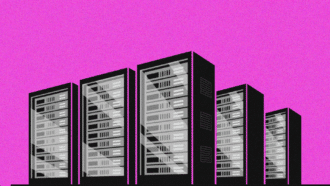London council approves data centre using power for half a million homes
The council of Ealing has approved plans for a data centre which would use four times as much electricity as every home in the borough, documents unearthed by tech justice non-profit Foxglove reveal.
Ealing council gave the go-ahead to the construction of a large data centre ‘campus’ on Southall Industrial Estate, West London, late last month.
The council’s own planning report reveals that the facility’s “total estimated electricity demand is 1,610,528 MWh per year, equivalent to the annual consumption of approximately 530,000 homes.”
There are 137,113 households in Ealing, according to the council’s website, meaning the new data centre complex will use around four times as much electricity as every home in the council area.
The council’s report also highlighted that solar panels on the data centre’s roof would be ‘one of the largest P[hoto] V[oltaic] installations in the borough.” However, it also states that the panels would generate just 150,000 kilowatt hours (kWh) per year. This represents less than one ten thousandth of the data centre’s total electricity demand.
The new, ‘hyperscale’ data centres currently being planned and built across the UK have raised concerns over climate emissions, given the large quantities of carbon dioxide that will be released to generate the power they will draw from the grid.
There were also warnings from the London Assembly earlier this year of the challenges posed to London’s electricity grid by the construction of data centres as well as the new homes which are needed.
The Ealing Council planning report recommends that the newly-approved data centre be referred to the London Mayor’s office for a ‘stage 2’ decision. Another large-scale proposed data centre in Ealing, at the ‘Honey Monster’ site, is also awaiting comment from the Mayor.
Donald Campbell, advocacy director at tech justice non-profit Foxglove said:
“Data centres use staggering amounts of electricity – according to the council’s own report, these ones will use as much power as half a million homes. That’s four times the number of households in Ealing.
“The data centre owners may pay for the electricity, but in many ways the rest of us will be footing the bill. Using all of this electricity will cause huge carbon emissions as it’s generated, harming efforts to get climate change under control.
“This extra demand on electricity is also likely to put further burdens on our already creaking grid, and drive up prices for other consumers – as has been seen already in America’s data centre boom.
“It’s deeply alarming that some councils – such as Ealing – are failing to take these serious environmental impacts into account properly. Putting solar panels on the data centre’s roof will be a drop in the ocean compared to the vast electricity demand it will create. At the very least, data centre developers should be required to build enough new renewable energy capacity to power these their facilities.
“London’s councils and mayor, and the UK Government need to get on top of the huge environmental damage that will be caused by an uncontrolled data centre building frenzy – before it’s too late.”
ENDS
Notes to editors
1. Details of the data centre approved by Ealing Council can be found on the council’s planning portal, by using Ref. No: 250949FUL and/or searching by its address: International Trading Estate Trident Way Southall UB2 5LF.
2. The extract from the Council’s report on the data centre’s energy use is as follows:
Energy Strategy
13.11. The Council is supportive of the Energy and Sustainability Strategy prepared by Envision (February 2025, v1). The proposed development comprises four data centres and four light industrial units. Due to the nature of the data centres, the scheme will have exceptionally high energy demands for server operation and cooling. The predicted electricity load has been assessed using CIBSE Technical Memorandum 54 (TM54), recognised as the most accurate methodology. The total estimated electricity demand is 1,610,528 MWh per year, equivalent to the annual consumption of approximately 530,000 homes.
13.12. The strategy incorporates measures to maximise energy efficiency and heat recovery. Waste heat from the data halls will be circulated to offices and communal areas, and subsequently to the adjacent industrial buildings for space heating. Localised water-source heat pumps will boost water to the required operating temperature, which has been calculated into the “Clean” element of the energy hierarchy. VRF heat pumps will provide backup heating and cooling to ancillary areas. Domestic hot water demand will be minimal and met through point-of-use electric heaters.
13.13. Renewable energy generation is proposed through four photovoltaic (PV) arrays installed on the industrial building roofs, with a combined capacity of 216 kWp, generating over 150,000 kWh annually. This represents one of the largest PV installations in the borough.
3. According to Ealing Council’s website, there are 137,113 households in the borough (based on 2021 figures): https://www.ealing.gov.uk/download/downloads/id/17842/population_characteristics_-_jsna_2021.pdf

